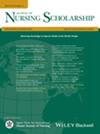Machine learning evaluation of inequities and disparities associated with nurse sensitive indicator safety events
Abstract
Purpose
To use machine learning to examine health equity and clinical outcomes in patients who experienced a nurse sensitive indicator (NSI) event, defined as a fall, a hospital-acquired pressure injury (HAPI) or a hospital-acquired infection (HAI).
Design
This was a retrospective observational study from a single academic hospital over six calendar years (2016–2021). Machine learning was used to examine patients with an NSI compared to those without.
Methods
Inclusion criteria: all adult inpatient admissions (2016–2021). Three approaches were used to analyze the NSI group compared to the No-NSI group. In the univariate analysis, descriptive statistics, and absolute standardized differences (ASDs) were employed to compare the demographics and clinical variables of patients who experienced a NSI and those who did not experience any NSIs. For the multivariate analysis, a light grading boosting machine (LightGBM) model was utilized to comprehensively examine the relationships associated with the development of an NSI. Lastly, a simulation study was conducted to quantify the strength of associations obtained from the machine learning model.
Results
From 163,507 admissions, 4643 (2.8%) were associated with at least one NSI. The mean, standard deviation (SD) age was 59.5 (18.2) years, males comprised 82,397 (50.4%). Non-Hispanic White 84,760 (51.8%), non-Hispanic Black 8703 (5.3%), non-Hispanic Asian 23,368 (14.3%), non-Hispanic Other 14,284 (8.7%), and Hispanic 30,271 (18.5%). Race and ethnicity alone were not associated with occurrence of an NSI. The NSI group had a statistically significant longer length of stay (LOS), longer intensive care unit (ICU) LOS, and was more likely to have an emergency admission compared to the group without an NSI. The simulation study results demonstrated that likelihood of NSI was higher in patients admitted under the major diagnostic categories (MDC) associated with circulatory, digestive, kidney/urinary tract, nervous, and infectious and parasitic disease diagnoses.
Conclusion
In this study, race/ethnicity was not associated with the risk of an NSI event. The risk of an NSI event was associated with emergency admission, longer LOS, longer ICU-LOS and certain MDCs (circulatory, digestive, kidney/urinary, nervous, infectious, and parasitic diagnoses).
Clinical Relevance
Machine learning methodologies provide a new mechanism to investigate NSI events through the lens of health equity/disparity. Understanding which patients are at higher risk for adverse outcomes can help hospitals improve nursing care and prevent NSI injury and harm.

 求助内容:
求助内容: 应助结果提醒方式:
应助结果提醒方式:


